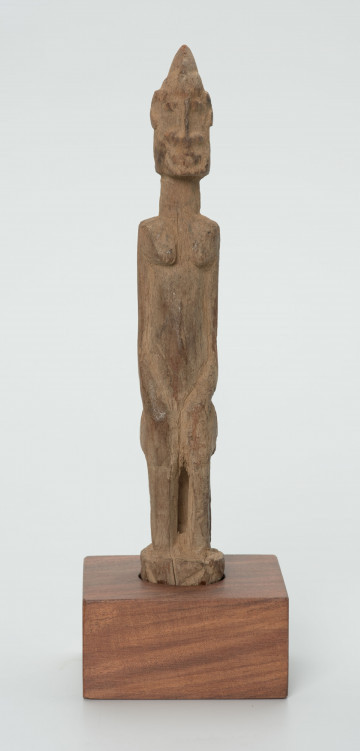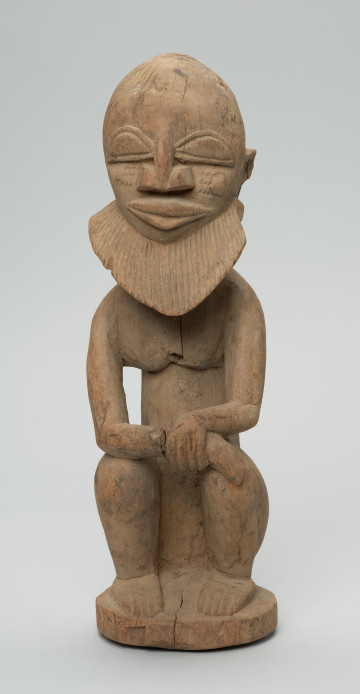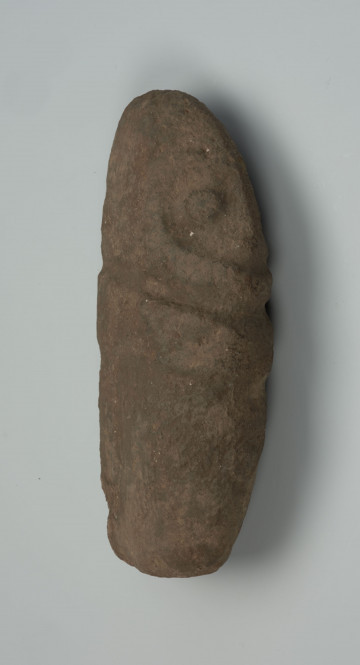
Figurine - ancestor
między 1901 — 1950
National Museum in Szczecin
Part of the collection: Collection of Dogonian art
The Dogon are people living in the Republic of Mali. Their social structure is quite complex. They are divided into a basic four major groups, often commonly referred to as tribes, which trace their ancestry back to one of four mythical ancestors. These groups in turn divide into lineages, which consist of lineages. It is assumed that there are about 80 Dogon families, whose primary occupation is agriculture. Alongside them live tribes whose members identify with Dogon culture and tradition, but are considered separate, endogamous castes characterised by a distinct status. During the research of Marcel Griaule's team in the 1930s four castes were noted in the Dogon: griots, blacksmiths, leatherworkers and weavers. Today only the first three are still clearly distinguishable. Among them the highest position is held by the smiths, among whom two groups of smiths can be distinguished: jemo, who live on the plains, and their former slaves - iru, who settled on the plateau. The blacksmiths' skills, including the manufacture of iron tools necessary for work in the fields, give them a privileged place in Dogon society. Both jemo and iru, due to their distinct status, also play the role of mediators and peacemakers in Dogon society. The applies not only to conflicts between the Dogon, but also to the misunderstandings that sometimes occur between the living and the ancestors, and between humanity and Amma, of which the prolonged lack of rain is a tangible proof. It is believed that the respect shown to blacksmiths has its origins in one of the cosmogonic myths, in which the first Blacksmith descended from heaven to bring fire, iron and seeds for humanity to grow.
Ewa Prądzyńska
Author / creator
Dimensions
cały obiekt: height: 13,5 cm, width: 2,5 cm
Object type
figure
Creation time / dating
Creation / finding place
Identification number
Location / status

między 1901 — 1950
National Museum in Szczecin

między 1951 — 2000
National Museum in Szczecin

między 1951 — 2000
National Museum in Szczecin
DISCOVER this TOPIC
National Museum in Lublin
DISCOVER this PATH
Educational path